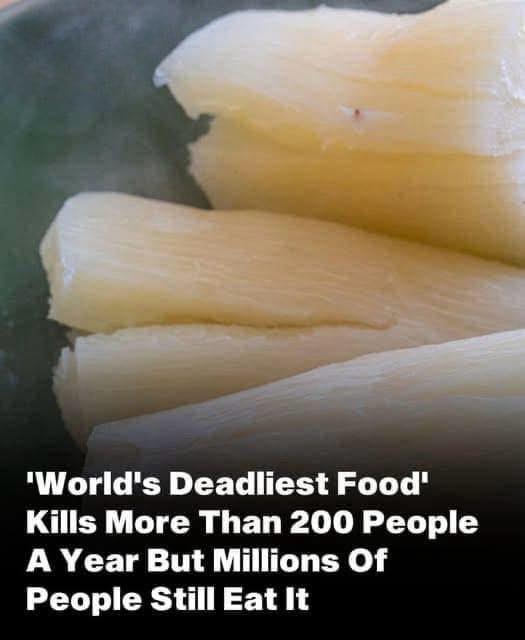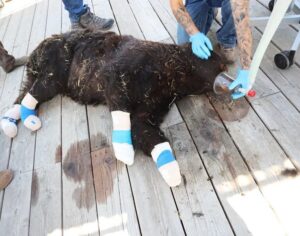Cassava, a root vegetable that is rich in Vitamin C and copper, is known for its popularity in tropical regions and is consumed by over 500 million people worldwide. Despite its widespread use, cassava is often referred to as “the world’s deadliest food” due to the significant health risks it poses if not prepared properly.
Native to Central and South America, cassava is often used in much the same way as potatoes. However, it contains harmful compounds, including cyanogenic glucosides, which can release cyanide when consumed raw. These compounds protect the cassava root from pests, but if not processed correctly, they can lead to dangerous levels of cyanide exposure.
According to the World Health Organization (WHO), around 200 deaths occur annually from the improper consumption of cassava. The cyanide content in raw or improperly processed cassava is particularly concerning during times of famine and war, where food scarcity might push individuals to consume it without the proper preparation. Cyanide poisoning from cassava can lead to severe health issues, including a disease known as konzo, a neurological disorder that causes irreversible paralysis.
Fortunately, when prepared and cooked properly, cassava can be a safe and valuable food source. The proper processing methods include soaking the peeled root in water for 24 hours, boiling, or drying it in the sun. When consumed in moderation, cassava provides a significant source of carbohydrates, fiber, vitamins, and minerals, making it a nutritious part of the diet.
Despite its dangers, cassava continues to be a staple food in many parts of the world, highlighting the importance of proper preparation to avoid its potentially lethal effects.
Please SHARE this article with your family and friends on Facebook.




